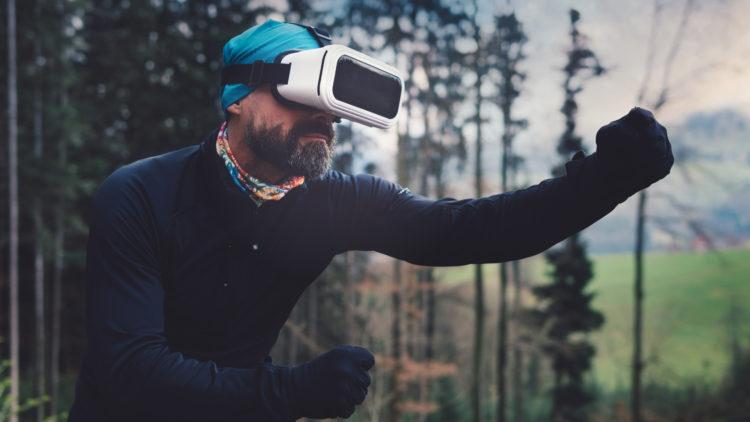If 2017 was about Nintendo launching its Switch, Samsung releasing the Galaxy S8 with
a borderless screen and Apple giving us the iPhoneX, complete with facial recognition, what does 2018 have in store when it comes to technological advances, particularly with business in mind?
JT’s technology leaders were put to the test, and here’s what they could see in their superfast, fibre-connected crystal balls:
 Tom Noel, Managing Director, JT International
Tom Noel, Managing Director, JT International
The advance of messaging…
How we communicate, particularly with devices, businesses and public services, will only continue to become more and more automated as technology gets smarter. Some of you may have engaged with customer support from companies such as Domino’s or Uber. It has the air of a friendly text conversation but did you know only one half of the interaction is actually human? We’ll all be engaging in these sort of conversations – verbally and via a keyboard or touchscreen – a lot more in 2018, perhaps buying online, booking a flight, contacting a call-centre, or searching for information online. Of course, we already have Siri and Alexa but we can expect their novelty to be replaced by normality, and the question is can we tell the AI from the human?
 Mike Stuchfield, Vice President, Business Development, JT Labs and eGaming
Mike Stuchfield, Vice President, Business Development, JT Labs and eGaming
More noise about voice activated technologies…
New developments in speech and machine learning, lower costs, and greater processing power are driving demand for voice recognition technologies. The global market for voice recognition is expected to increase from £78 billion in 2016 to £140 billion in 2021. We already have a whole family of virtual assistants: Siri, Bixby and Google for our smart phones; Mac Siri, Windows Cortina and Google Voice for our laptops; and Alexa, HomePod, Google Home and television ‘smart interaction’ for our homes. The next step is for voice-enabled applications and devices to enter the business world; the medical and manufacturing industries will be particularly well suited to leverage this next advancement.
 Dominic Vye, Head of Commercial Development
Dominic Vye, Head of Commercial Development
The real arrival of virtual reality…
Virtual Reality (VR) is a regular on any ‘tech predictions’ list, but whereas before the technology was restricted to funky headsets VR is starting to have real practical applications. Recently, surgeons on different sides of the globe put on virtual reality headsets to view a London operating theatre and jointly operate on an NHS patient. The lead surgeon was assisted by other surgeons elsewhere in London and in Mumbai, who all wore Microsoft Hololens headsets to “virtually appear” in the operating theatre and communicated as if they were together in the room as avatars. During the surgery, the doctors were able to view patient scans in the form of 3D holograms hovering in the theatre, and could virtually draw on the images. Massive advancements are also happening at pace to bring VR into education (imagine walking the streets of ancient Rome), defence (very effective in creating battlefield situations for training), entertainment (IMAX has recently opened its first VR theatres in New York, Los Angeles and Shanghai) and business (simulating training for customer service staff
or visualising designs).
 Andy Parkin, Head of IT
Andy Parkin, Head of IT
The language of AI…
The increasing use of Artificial Intelligence (AI) to automate/streamline and drive efficiencies will be significant to both consumers and enterprises. AI has been around for a long time but it’s finally coming of age. Ask AI researchers what their next big target is, and they are likely to mention language. The hope is that techniques that have produced spectacular progress in voice and image recognition, among other areas, may also help computers generate a multitude of languages more effectively and remove the restrictions some people with strong accents or speech conditions might experience in accessing AI. This is a long-standing goal in Artificial Intelligence, and the prospect of computers communicating and interacting with us using language is a fascinating one. Better language understanding from machines would make them a whole lot more useful to us.
 Paul Bullock, Head of IoT
Paul Bullock, Head of IoT
A SIMple truth…
The term ‘eSIM’ relates to a new standard being promoted by network operators worldwide, likely to roll out in 2018. It will come in the form of an integrated SIM chip, one that cannot and need not be removed from a device. It is something that consumer electronics manufacturers are also keen to adopt for connected items around the house, as part of the Internet of Things. The information on the eSIM will be rewritable by all operators, meaning a user can decide to change operator with a simple phone call. A new SIM will not be required, nor will there be any time delay in switching the eSIM to its new purpose. One of the unintended advantages it offers from a design point of view is that you make a smaller device because there’s no need to accommodate a SIM card or the tray that holds it, hence the use in devices like the Apple Watch 3.
 Marcus Irwin, Chief Technology Officer, JT International
Marcus Irwin, Chief Technology Officer, JT International
Make way for the ‘Identity of Things’…
The research firm Gartner estimates that 95% of new electronic product designs will contain IoT technology by 2020. Our prediction is a move away from ‘Internet of Things’ to the ‘Identity of Things’ with an increasing emphasis on linking the physical device or sensor to the application owner and location. The security of both the control and application interface will be key. The penetration and capability of devices are going to expand with new radio technologies to support the density of service. NarrowBand-IoT, Category-M, Sigfox and LoRa networks will all play their part within this new ecosystem. These are low powered, low throughput technologies that allow very long battery life and are starting to supplement – and replace – not only traditional SIM-based IoT but also ‘in-building’ technologies like Wi-Fi, Bluetooth and Zigbee.
 Tamara O’Brien, Head of Customer Experience
Tamara O’Brien, Head of Customer Experience
2018 is the year of customer retention and a focus on loyal customers…
With technological advancements moving at an exponential rate, customers continue to expect and demand more from companies in terms of customer experience; both related to speed and clarity of interactions which are key to satisfying and retaining customers. This is the year companies will start to really put this into practice and activate the many technologies now available to drive customer service to new levels in an Omni-channel future. Technologies can now provide a much more seamless experience between visiting a store, raising a query on social media, calling the contact centres team and receiving mobile messages/interfacing with billing. A more consistent and frictionless experience across all these touch points, will be what a customer centric organisation will strive for. It’s both more efficient for them and better for their customers. We will be looking to our own systems to continue to develop ways to improve our customer’s journey with us and make sure they get the help they need when, where and how they need it.














